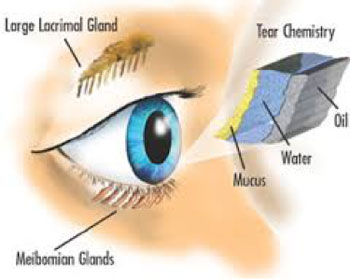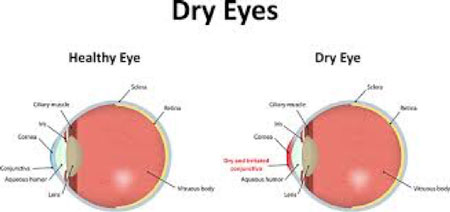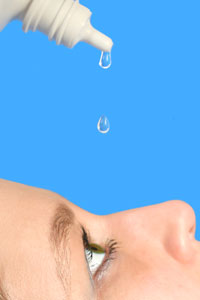Winter is right around the corner; it is time to prepare for the cold winter months. This includes not only changing your wardrobe but also preparing your body for possible effects of the environment on your health. These changes can include issues with Dry Eye Syndrome. Symptoms include itchy, dry eyes that can be painful, blurred, watery vision, and an uncomfortable burning sensation. Even mild dehydration can affect the watery component of the eye.
Your eyes receive the worst of winter. Winter winds tend to be harshest, heaters radiate dry heat indoors and also in cars that lead to dry eyes. There are many factors of dry eye related issues such as age, side effects of drugs and certain diseases: Sjogren’s syndrome, rheumatoid arthritis and collagen vascular diseases. But, the cold, dry winter months not only worsen these effects but also make them more noticeable.

There are ways to help prevent the side effects of dry eye syndrome without using medical treatments.
- Drink a lot of water and eat fluid-rich foods such as soup, fruits and vegetables.
- Use a humidifier in your home and workspace. This will add much need moisture to the atmosphere around you.
- Stay away from heating vents in your home or car. This forced air heat can cause the eyes to dry out quickly.
- Increase your intake of Omegas. The dry, winter air has been shown to cause inflammation of the tear glands, which can partially close off tear flow. One way to help ease the inflammation is to consume a good amount of omega 3 fatty acids. Taking fish oil supplements will help increase the amount of tears that you produce also.

If these simple regimens are unsuccessful, several treatments provide relief.
- Artificial tears, such as Systane® and Refresh®, give temporary relief. There are also thicker lubricants that can be used at bedtime, like Refresh P.M.® Artificial lubricants should be used often, especially before going outside, computer work or excessive reading.
- Temporary punctal occlusions can help show by closing the punctum to help with dry eyes. These plugs are inserted into the punctum and will dissolve in approximately 10 days.
- Non-dissolving punctal plugs can be placed if the temporary plugs were effective. These plugs initially help increase the tear level by blocking the drain that allows the tears to flow out of the eyes.
- Restasis® is a prescription eye drop used to help the eyes natural ability to produce tears. Unfortunately, it may take a few months for the effects of Restasis to begin; during this period it may be useful to use a steroid eye drop to help with inflammation. Restasis is used twice daily.
- Xiidra™ is a new drug that helps treat the signs and symptoms of dry eye syndrome. It’s the first approved drug in a new class called lymphocyte function-associated antigen 1 (LFA-1) antagonists.

Other tips for those who suffer from dry eye issues are to wear close fitting wrapped sunglasses outside. This will cut down on the amount of wind that reaches the eyes. It is also a good idea to cut back on contact lens wear time for daily wear contacts lens patients. Winter is on its way; there is no way to avoid it. But for those who suffer from dry, itchy eyes of winter, you can have more comfort and less frustration throughout the days with just small changes in your day-to-day routine. Happy Winter!
Systane is a registered trademark of Alcon, A Novartis Company
Refresh is a registered trademark of Allergan, Inc.
Restasis is a registered trademark of Allergan, Inc.
Xiidra is a trademark of Shire US, Inc.

Linda Hardy received the American Optometric Association Paraoptometric of the Year Award at the 2016 SECO meeting in Atlanta, Georgia. Linda is a Certified Optometric Technician (COT) and Certified Ophthalmic Assistant (COA). She is also ABO and NCLE certified and a Licensed Dispensing Optician (LDO) in the state of Georgia.
A graduate of Georgia Medical Institute as a Registered/ Certified Medical Assistant, Linda began her optical career working with a group of ophthalmologists as an ophthalmic assistant. She has been the Clinical Coordinator with a private optometry practice in Newnan, Georgia for 15 years.
Linda is also a speaker and educator at regional optical meetings. She and her husband have five children, and she enjoys spending time with her family, exercising, reading and volunteering in her community.











